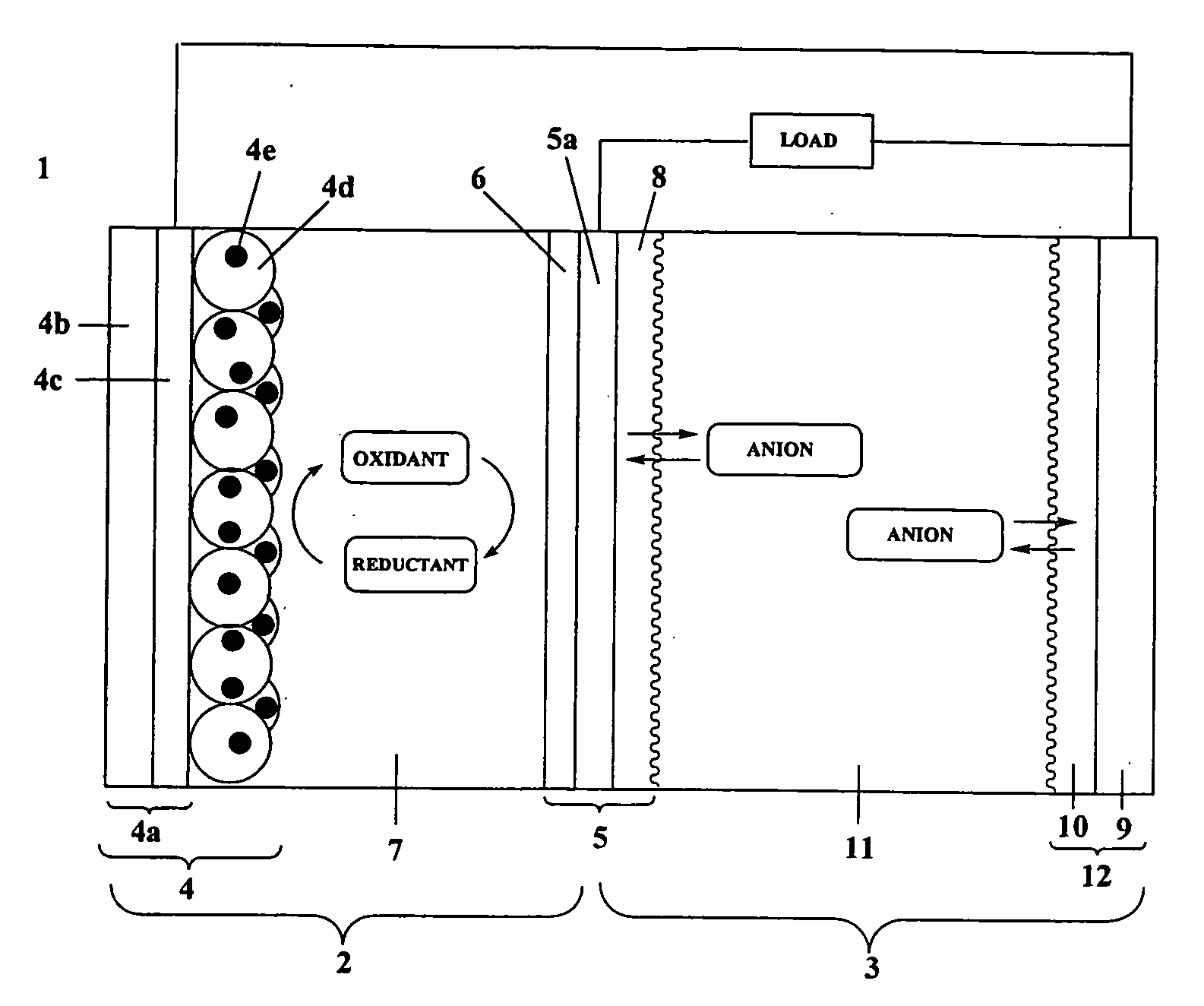Three-Pole Two-Layer Photo-Rechargeable Battery
a photo-rechargeable battery and two-layer technology, applied in the field of energy storage dye-sensitive solar batteries, can solve the problems of limiting the application of individual batteries, inability to generate power, and dye-sensitive solar batteries, and achieve the effect of reducing internal resistance, reducing internal resistance, and charging curren
- Summary
- Abstract
- Description
- Claims
- Application Information
AI Technical Summary
Benefits of technology
Problems solved by technology
Method used
Image
Examples
production example 1
Manufacture of Photo-Electrode
[0103]A TiO2 paste (Ti Nanoxide D, Solaronix) was coated on an FTO glass substrate (2 cm×2.5 cm×1 mm) using the doctor blade method. Following coating, the past was baked at 550° C. for 30 min in an electric furnace and then cooled at room temperature. After immersion for 20 hrs in a dye solution, a photo-electrode was manufactured. The dye solution used dissolved 0.3 mM of N719 (Peccell Technologies) in a mixed solvent (1:1) of acetonitrile (AN) and t-butyl alcohol.
production example 2
Manufacture of Common Electrode on Which First Conductive Polymer Layer (Polyaniline Layer) is Formed by Electrolytic Polymerization
[0104]A platinum film with a thickness of 30 nm was formed on a surface of a titanium substrate (thickness: 1 mm) using the sputtering method. On a surface of an opposite side thereof, polyaniline was subjected to electrolytic polymerization according to the following procedure. For the polymerization solution, an aqueous solution of 0.5 M aniline and 1 M HClO4 was used. For the polymerization method, a controlled potential electrolytic polymerization method at +0.8 V (vs. SCE) was used. The electrolytic polymerization volume was 1 Ccm−2. In such case, the thickness of the polyaniline layer obtained was 20 μm.
production example 3
Manufacture of Common Electrode on Which First Conductive Polymer Layer (Polyaniline Layer) is Formed by Spin Coating
[0105]A platinum film with a thickness of 30 nm was formed on a surface of a titanium substrate (thickness: 1 mm) using the sputtering method. On a surface of an opposite side thereof, a polyaniline dispersion liquid (NX-B001X, Nissan Chemical Industries) was spin-coated. The spin-coated film obtained was a relatively homogeneous film with a thickness of approximately 20 μm.
PUM
 Login to View More
Login to View More Abstract
Description
Claims
Application Information
 Login to View More
Login to View More - R&D
- Intellectual Property
- Life Sciences
- Materials
- Tech Scout
- Unparalleled Data Quality
- Higher Quality Content
- 60% Fewer Hallucinations
Browse by: Latest US Patents, China's latest patents, Technical Efficacy Thesaurus, Application Domain, Technology Topic, Popular Technical Reports.
© 2025 PatSnap. All rights reserved.Legal|Privacy policy|Modern Slavery Act Transparency Statement|Sitemap|About US| Contact US: help@patsnap.com


